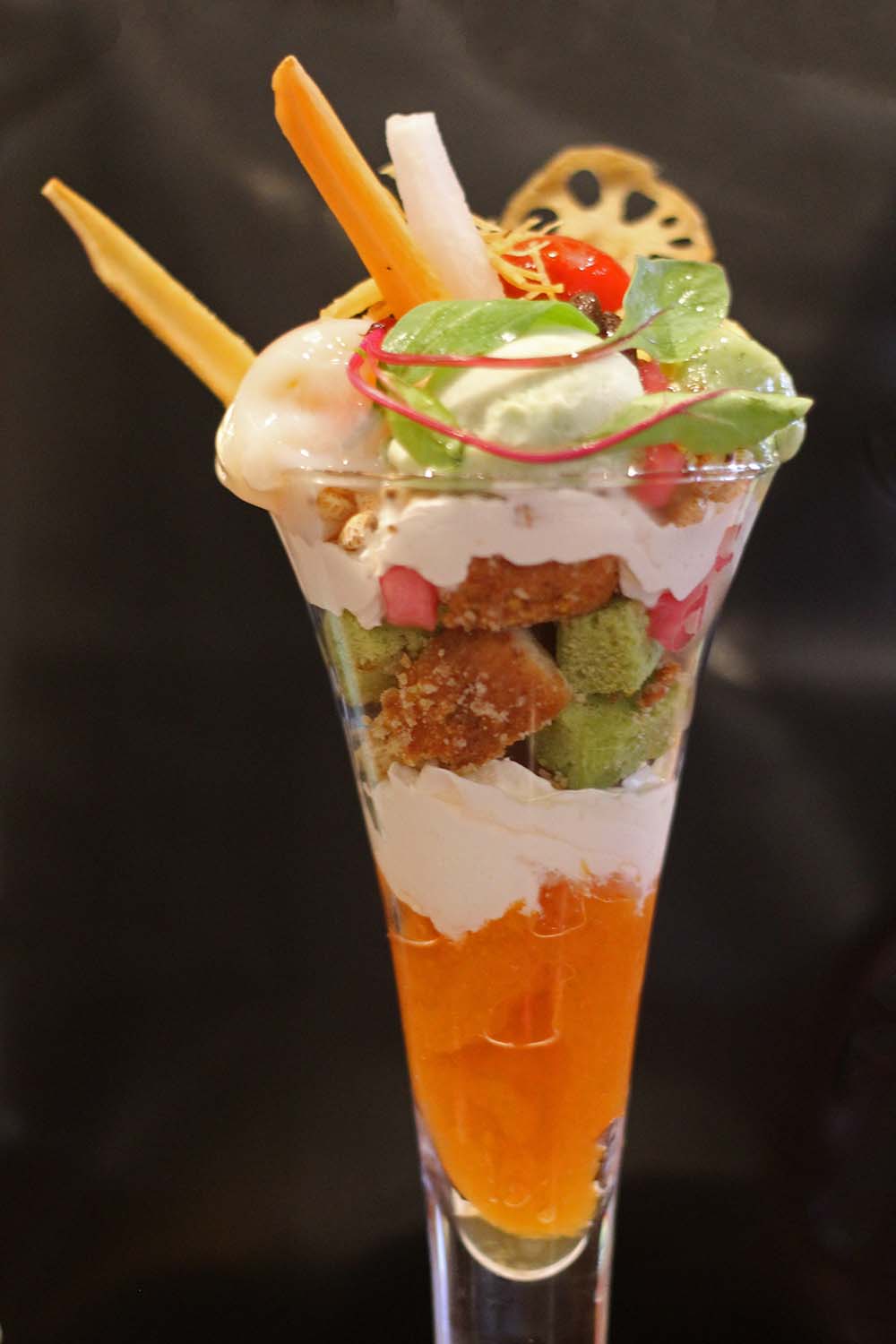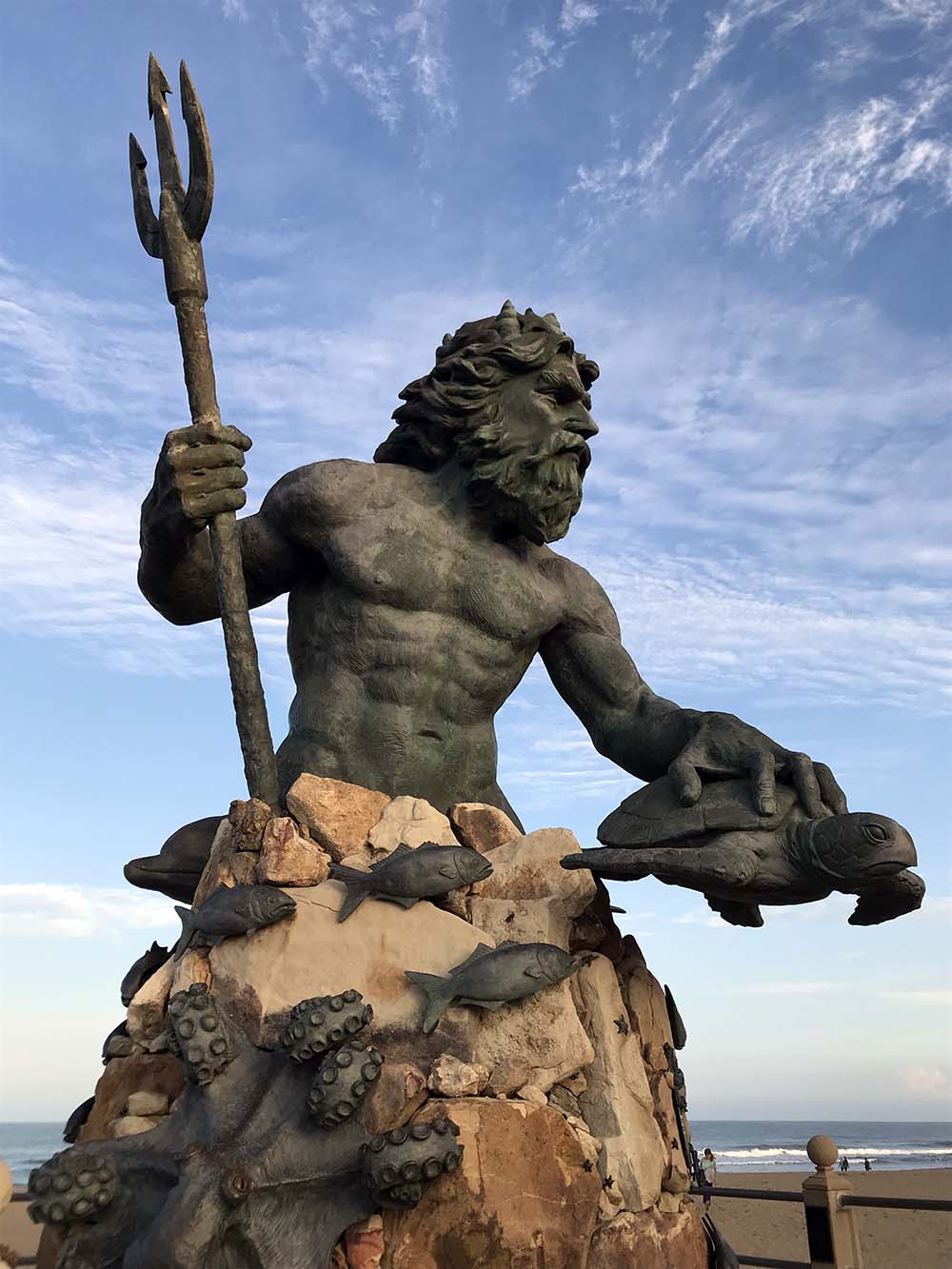Adam Waxman is an award winning travel journalist focusing on…
The sign reads: “Japan vegetable sommelier’s vegetable juices bring vitality to your life.” There’s even one to make me more handsome. Okay, I’ll bite. Inside Nakamasa, I browse a veritable garden of impossibly vibrant vegetables like fiery red pumpkin, neon purple eggplant and emerald green wheatgrass. Sun-kissed, rain-nourished ingredients between the mountains and the Sea of Japan are abundant in this endearing temple and hot-spring retreat of Kaga, Ishikawa, Japan, and with each sip of rejuvenating juice I am becoming like Benjamin Button-san.
Kaga is off the beaten path from Kanazawa. It’s main street, Yuge Kaido, is impeccably maintained. Each artisanal shop beckons. Weaving in and out of local pottery and lacquerware shops, I indulge in onsen tamago. These hot-spring eggs, which we can boil ourselves in the mineral-rich hot spring water, are unusually delicious and creamy in texture throughout. It’s as though they’ve been sous vide in their shells. A local map of parfait cafés leads me to Bengaraya café for a parfait suited to a breakfast of champions. Is it health food or dessert? I have no idea. My glass is brimming with four scoops of ice cream flavours including broccoli and green tea; whipped cream; a soft-boiled egg; green tea cake; carrot jelly; lotus root; as well as a fruits and leafy greens.
 Ishikawa is renowned for its Kaga cuisine. At the centre of Kaga is the Hoshino Resort, Kai Kaga, where attention to detail in cuisine and hospitality is reverential. Every dish is served on colourful, locally crafted kutani yaki ceramics, and delicately presents a nutritious bounty of fresh local specialties from wild mountain yams to local river clams cultivated in the fresh water from Mt. Hakusan. Without a care for time, I crack an egg over a bowl of locally harvested rice, ladle soul-replenishing dashi and enjoy grilled local snapper, steamed bamboo and tempura vegetables. There are no modern day distractions at this ryokan, just serene quiet and, in the comfort of my room, a luxurious austerity. Under the night sky I slide open the balcony doors, sink into my own private open-air bath, sip fresh green tea and stare up at the stars. The hot spring within Kai Kaga is unique for its privacy and pristine qualities. The water and the fresh air are still and silent. Legend has it that a Medicine Buddha had instructed a monk to dig up this thermal spring in this area, because its optimal temperature would cure ills. Soaking in the soothing water, I breathe in the fresh mountain air and melt away.
Ishikawa is renowned for its Kaga cuisine. At the centre of Kaga is the Hoshino Resort, Kai Kaga, where attention to detail in cuisine and hospitality is reverential. Every dish is served on colourful, locally crafted kutani yaki ceramics, and delicately presents a nutritious bounty of fresh local specialties from wild mountain yams to local river clams cultivated in the fresh water from Mt. Hakusan. Without a care for time, I crack an egg over a bowl of locally harvested rice, ladle soul-replenishing dashi and enjoy grilled local snapper, steamed bamboo and tempura vegetables. There are no modern day distractions at this ryokan, just serene quiet and, in the comfort of my room, a luxurious austerity. Under the night sky I slide open the balcony doors, sink into my own private open-air bath, sip fresh green tea and stare up at the stars. The hot spring within Kai Kaga is unique for its privacy and pristine qualities. The water and the fresh air are still and silent. Legend has it that a Medicine Buddha had instructed a monk to dig up this thermal spring in this area, because its optimal temperature would cure ills. Soaking in the soothing water, I breathe in the fresh mountain air and melt away.
Cultural activities abound across the town, from soba noodle workshops to pottery, lacquerware and wood carving workshops as well as sake tastings; but most come here to relax and revitalize in the hot springs, unwind in the easeful hospitality of Kai Kaga and stroll along the wooded trails by the river.
 Crossing the Ayatori Bridge, which looks like a cat’s cradle for which it is named, reveals an idyllic open-air teahouse in the gorge below. Descending a nature trail toward the riverbed, I remove my shoes by a small waterfall and am seated on an adjacent tatami mat over a slow moving river. No students with laptops here. Forget everything. This café, Kakusenkei Kawadoko, is the most tranquil place to sit and have tea in Japan. I am served an aromatic green tea with warm, spongy roll-cake, and leisurely take in this calm oasis.
Crossing the Ayatori Bridge, which looks like a cat’s cradle for which it is named, reveals an idyllic open-air teahouse in the gorge below. Descending a nature trail toward the riverbed, I remove my shoes by a small waterfall and am seated on an adjacent tatami mat over a slow moving river. No students with laptops here. Forget everything. This café, Kakusenkei Kawadoko, is the most tranquil place to sit and have tea in Japan. I am served an aromatic green tea with warm, spongy roll-cake, and leisurely take in this calm oasis.
Returning to Kai Kaga I’m drawn to the nearby Hatori Shrine and climb its steep cobbled staircase into the ancient complex of shrines above. Massive trees, with roots twisting along the moss-covered ground, and paving stones winding through this forest sanctum lead to a step on which I sit in meditative peace. The energy and spirit is palpable. In Japan, prayer is not performed inside a temple; we manifest it simply by opening ourselves up to the nature around us.
Read more:
Adam Waxman is an award winning travel journalist focusing on food, wine and well being. As well as an actor in film, television and formerly, the Stratford Festival, he is the Publisher of DINE and Destinations magazine.




